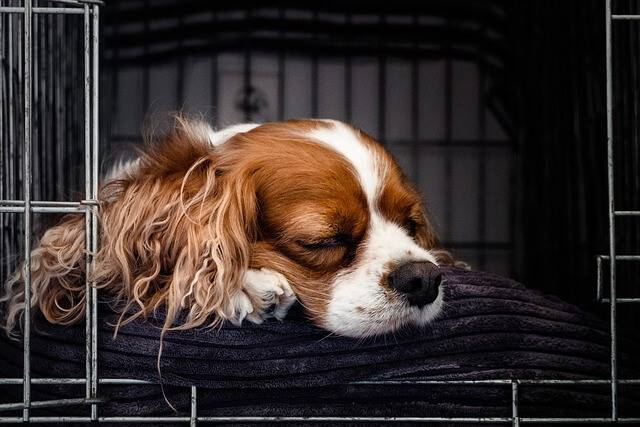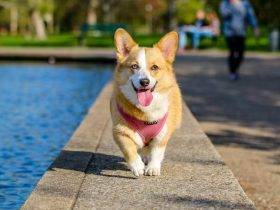The importance of proper puppy training
As a responsible dog owner, it is crucial to understand the importance of proper puppy training. Training your puppy not only helps in developing good behavior but also sets the foundation for a happy and well-adjusted adult dog. A well-trained dog is a joy to be around and can be easily integrated into your family and social life. On the other hand, a poorly trained dog can be a source of frustration and may even pose a risk to others. To ensure the success of your puppy’s training, it is essential to start with the basics, and one of the key tools in achieving this is using the right dog crate.
Understanding the benefits of using a dog crate
Using a right dog crate as part of your puppy’s training has numerous benefits. Firstly, a crate serves as a safe and secure space for your puppy, mimicking the den-like environment that dogs naturally seek. It provides a sense of security and comfort, especially when you are away or during bedtime. Secondly, a dog crate helps in housebreaking your puppy. Dogs have an instinctual aversion to soiling their living space, and by confining your puppy to the crate, you can establish a routine for bathroom breaks and reinforce good potty habits. Lastly, a dog crate aids in preventing destructive behavior and keeps your puppy safe when you are unable to supervise them. It acts as a containment area, ensuring that your puppy does not chew on furniture, electrical cords, or other potentially dangerous items.
Factors to consider when selecting a dog crate
When selecting a dog crate, there are several factors to consider. The first is the size of the crate. It is essential to choose a crate that is suitable for the size and breed of your puppy. A crate that is too small will be uncomfortable and restrictive, while a crate that is too large may hinder the housebreaking process. Additionally, consider the material of the crate. Common options include wire crates, plastic crates, and soft-sided crates. Each has its advantages and disadvantages, so choose one that best suits your needs and preferences. Lastly, consider the durability and quality of the crate. A well-constructed crate will withstand the test of time and ensure the safety of your puppy.
Determining the ideal size for your dog crate
Determining the ideal size for your dog crate is crucial to ensure the comfort and safety of your puppy. To determine the correct size, measure your puppy from the tip of their nose to the base of their tail and add a few inches for comfort. Additionally, measure the height of your puppy from the ground to the top of their head while standing. The crate should be tall enough for your puppy to stand up and turn around comfortably. It is important to note that puppies grow quickly, so consider purchasing a crate that can be adjusted as they grow or invest in a larger crate to accommodate their adult size.
Different types of dog crates available
There are several types of dog crates available, each with its own unique features. Wire crates are a popular choice due to their durability and visibility. They allow for proper ventilation and can be easily folded for storage or transportation. Plastic crates, on the other hand, provide a more den-like environment and are ideal for dogs that prefer a cozy and secure space. Soft-sided crates are lightweight and portable, making them suitable for travel or temporary use. They are not recommended for dogs that are prone to chewing or scratching. Consider your puppy’s needs and your lifestyle when selecting the type of dog crate that best suits you.
Tips for crate training your puppy
Crate training your puppy can be a smooth and positive experience with the right approach. Start by introducing the crate gradually and making it a positive and rewarding place for your puppy. Use treats, toys, and praise to create a positive association with the crate. Gradually increase the duration of time your puppy spends in the crate, always ensuring their comfort and safety. Establish a routine for bathroom breaks, feeding, and playtime to create structure and help with housebreaking. Never use the crate as a form of punishment, as this will create negative associations and hinder the training process. With patience, consistency, and positive reinforcement, your puppy will learn to love their crate.
Finding puppy training services near you
Finding puppy training services near you is essential for the success of your puppy’s training. One reputable option is PetSmart, a leading pet retailer that offers professional training services. Their certified trainers have extensive experience in training puppies and can provide guidance and support throughout the process. PetSmart offers a variety of training programs, including puppy obedience, socialization, and problem-solving. Their classes are designed to be fun and engaging, ensuring that both you and your puppy enjoy the learning experience. Additionally, PetSmart provides a safe and controlled environment for your puppy to socialize with other dogs and people, promoting good behavior and confidence.
The benefits of professional training at PetSmart
Opting for professional training at PetSmart offers numerous benefits for both you and your puppy. Their trainers have a deep understanding of dog behavior and can address specific issues or concerns you may have. They use positive reinforcement techniques to encourage good behavior and build a strong bond between you and your puppy. Professional training provides structure and consistency, helping your puppy learn and retain commands more effectively. Additionally, training at PetSmart allows your puppy to socialize with other dogs, improving their social skills and reducing the risk of aggression or anxiety in the future. With the guidance of a professional trainer, you can ensure that your puppy receives the best possible training experience.
Exploring off-leash training options
Off-leash training is another valuable aspect of puppy training that you may consider. Off-leash training allows your puppy to learn to respond to commands and behave appropriately even when not physically restrained by a leash. This type of training promotes freedom and independence while still maintaining control and ensuring your puppy’s safety. Off-leash training can be done in various settings, such as fenced-in areas, dog parks, or even specialized training facilities. It requires consistency, patience, and a solid foundation of basic obedience commands. By exploring off-leash training options, you can provide your puppy with the skills and confidence to enjoy more freedom and off-leash adventures.
The advantages of off-leash dog training
Off-leash dog training offers several advantages for both you and your puppy. It enhances your puppy’s recall skills, allowing them to come when called even in distracting environments. This can be particularly useful in situations where you need to ensure your puppy’s safety or prevent them from engaging in unwanted behavior. Off-leash training also promotes physical exercise and mental stimulation, as your puppy can explore and engage with their surroundings more freely. Additionally, off-leash training strengthens the bond between you and your puppy, as you rely on trust and effective communication. It instills confidence in your puppy and helps them become a well-rounded and obedient companion.
Ensuring safety and comfort in your dog crate
Ensuring safety and comfort in your dog crate is essential for successful crate training. Start by choosing a crate that is spacious enough for your puppy to stand, turn around, and lie down comfortably. Avoid using excessive bedding or blankets that your puppy can chew on or potentially suffocate in. Place the crate in a quiet and secure area of your home, away from excessive noise or foot traffic. Provide your puppy with toys or chew treats to keep them entertained and prevent boredom. Regularly clean the crate to maintain a hygienic environment for your puppy. By creating a safe and comfortable space, you can help your puppy view the crate as a positive and enjoyable place.
Choosing the right dog crate accessories
Choosing the right dog crate accessories can enhance your puppy’s comfort and make crate training more enjoyable. Consider investing in a comfortable crate mat or bed that provides adequate support and insulation. Look for accessories that are easy to clean and maintain, as accidents or spills may occur during training. Provide your puppy with appropriate toys or chew treats to keep them occupied and prevent destructive behavior. Avoid using accessories that may pose a choking hazard or are easily destroyed. By selecting the right accessories, you can create a cozy and inviting environment that encourages your puppy to view their crate as their own special space.
Common mistakes to avoid when crate training
When crate training your puppy, it is important to be aware of common mistakes that can hinder the training process. Firstly, avoid using the crate as a form of punishment. This can create negative associations and make your puppy afraid or resistant to entering the crate. Secondly, do not leave your puppy in the crate for extended periods of time, especially when they are young. Puppies have limited bladder control and need frequent bathroom breaks. Gradually increase the duration of time your puppy spends in the crate as they grow older and develop better control. Lastly, do not force your puppy into the crate or rush the training process. Patience and consistency are key to successful crate training.
Conclusion
Mastering puppy training is a journey that requires time, patience, and dedication. Selecting the perfect dog crate is an important step in ensuring the success of your puppy’s training. By understanding the benefits of using a dog crate and considering factors such as size and type, you can provide your puppy with a safe and secure space for learning and relaxation. Crate training, along with professional training services like those offered at PetSmart and exploring off-leash training options, will help your puppy develop good behavior, social skills, and confidence. Remember to prioritize your puppy’s safety and comfort in the crate, choose the right accessories, and avoid common mistakes. With the right approach, you can master puppy training and enjoy a lifelong bond with your well-behaved and happy canine companion.





Leave a Reply